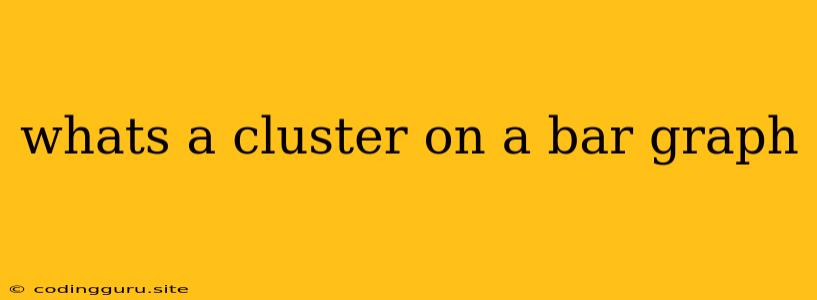What's a Cluster on a Bar Graph?
A clustered bar graph is a powerful tool for visualizing data that involves comparing different groups or categories. Imagine you're trying to understand the sales performance of various products across different regions. A clustered bar graph can help you visually represent this information effectively.
But what exactly is a cluster in this context? Let's break it down:
Understanding Clusters
In a clustered bar graph, a cluster represents a single category or group of data. It's a collection of bars that are grouped together, each bar representing a specific data point within that category.
For instance, if we're looking at product sales by region, each region would be a cluster. Within that cluster, we'd have individual bars representing sales for each product in that region.
Why Use Clustered Bar Graphs?
Clustered bar graphs are particularly useful for:
- Comparing multiple groups: They allow you to easily compare data across different categories, highlighting trends or variations.
- Visualizing relationships: By clustering bars, you can see how different data points within a category relate to each other.
- Presenting complex data: They can effectively convey complex information in a clear and visually appealing way.
Example: Product Sales by Region
Let's imagine we're analyzing product sales for three products (A, B, and C) across two regions (East and West). A clustered bar graph could be used to represent this data:
Cluster: Region (East & West) Bars: Product A, Product B, Product C within each region
Interpretation:
- We can compare the total sales of each product across regions (e.g., Product A sales in the East vs. the West).
- We can compare the sales of different products within each region (e.g., Product A vs. Product B sales in the East).
Tips for Creating Effective Clustered Bar Graphs
- Clear Labeling: Ensure your axes are labeled clearly and concisely.
- Consistent Color Scheme: Use consistent colors for each product across all regions to maintain visual clarity.
- Appropriate Scale: Choose a scale that allows you to clearly see the differences in data values.
- Add Data Labels: Include data labels on each bar to provide precise values.
Conclusion
A cluster in a clustered bar graph represents a group or category of data, allowing for visual comparisons and analysis of relationships between data points. By understanding the concept of clusters, you can create informative and impactful bar graphs to communicate complex data effectively.
